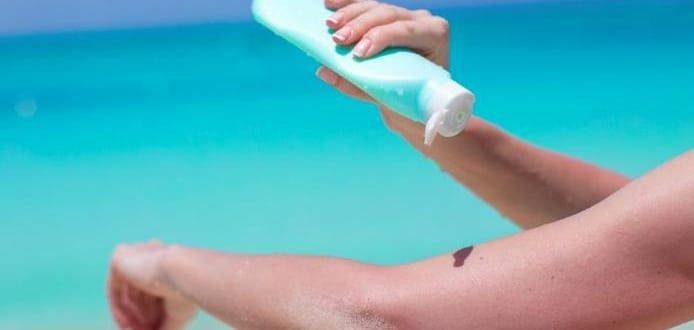
Waterproof is a myth sunscreen: 7 things to know when buying sunscreen
Dermatologists recommend wearing sunscreen whether it's sunny or cloudy, summer and winter, but it's definitely more important not to forget never in the summer and especially when you are outdoors.
Choosing the best sunscreen, however, can be difficult, as there are many products on the market that look different and are claimed by their manufacturers to be suitable for different uses.
Waterproof sunscreen is a myth
Read 7 essential tips about buying sunscreen, as they emerge from the sweethome.com's extensive research
1. Yes, the Sun Protection Factor (SPF) is important
Let's start with the basics. Recent research has shown that sunscreens with SPF 60+ do not work as they claim on the label. Choose sunscreens with at least SPF 30+ and don't be "ashamed" of how much you put on each time. Only in this way will you reduce the chances of redness, sunburn, wrinkles, spots, sagging skin and, above all, skin cancer (melanoma).
Consider that sunscreens with an SPF of 50 block 98% of the sun's rays reaching your skin, and those with a lower SPF block less. Equally important is that it protects you from both UVA and UVB rays. Each type of ray causes different types of damage to the skin. In general, UVB rays cause sunburn and UVA causes deeper, longer-term damage. Both rays—UVA and UVB—contribute to skin cancer, so it's important to choose a sunscreen that can block both.
2. How you apply sunscreen is even more important!
According to dermatologists and multiple scientific papers and studies, you should apply (all over your body) an amount of sunscreen each time that would fit in a shot glass for every one hour you are out in the sun (eg sunbathing). According to the survey, most people use only 1/4 or half of this recommended dosage, mainly for reasons of economy, since sunscreens can be quite expensive.
To get the most out of your sunscreen, you should apply it at least 30 minutes before going outside, then reapply every hour and every time after you get in the water and/or sweat.
3. Not all sunscreens have the same method of protection
There are two main types of sunscreens on the market: natural (which reflect the rays away) and chemical (which absorb the rays before they hit your skin). Some companies even offer a hybrid version of the two.
In general, natural sunscreens (those with zinc oxide and titanium oxide in the ingredients) are the ones that tend to appear white on the skin. Chemical sunscreens, which use oxybenzone and avobenzone, usually dry on the skin to a thinner, drier coating.
4. There is no such thing as a "waterproof" sunscreen
When buying a sunscreen, the “waterproof” label is something of an urban myth. You should never rely on sunscreen to stick to your skin even after you swim in the sea or sweat. The US Food and Drug Administration (FDA) states that sunscreens can only be waterproof for a maximum of 80 minutes after being applied to the skin.
5. Prefer sunscreens in cream form rather than sprays
The convenience of a spray can seem tempting, but uneven sunscreen application is almost certain. Spray sunscreens have become popular of late, but the proper application for your own protection is to apply the material by hand and rub it well into your body. Also, you can't calculate how much you put in each time if you use a spray.
6. "Sensitive skin" products for children are also a myth
According to two experts, Perry Romanowski and Patricia Treadwell (chemist and dermatologist, respectively), there is no sunscreen for sensitive skin. It's just another marketing term. Everyone can be triggered by different things. If a sunscreen irritates your skin, it is most likely the fragrances, or pigments in it.
Regarding children: First of all, babies under 6 months should not be exposed to the sun at all. Second, sunscreens on the market for babies and children are basically the same as all other sunscreens, they just come in more kid-friendly scents.
7. The more expensive sunscreen doesn't necessarily mean it's better
One of the more interesting results from Sweethome's study is that a more expensive sunscreen is no more effective than a cheaper one.
The more expensive sunscreens usually also contain expensive but unrelated sun protection ingredients (eg extracts and fragrances) which make virtually no difference to the effectiveness of the product.
http://www.iatropedia.gr
http://www.today.com

No Comments